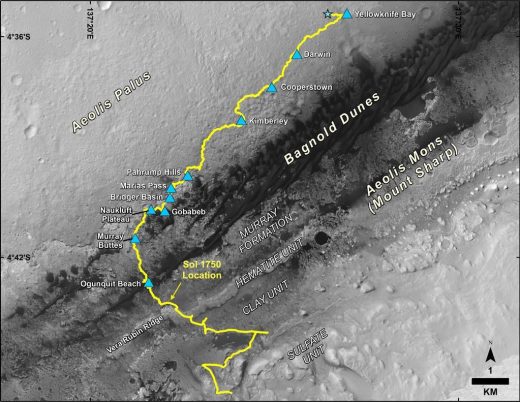Bob Zimmerman has posted one of his periodic updates on the explorations of the Curiosity and Opportunity rovers on Mars: Mars rover update: July 12, 2017 | Behind The Black.
In the five years since Curiosity landed in Gale Crater, it has moved only about 17 km but has done a lot of science along the way: Mid-2017 Map of NASA’s Curiosity Mars Rover Mission | NASA JPL.

NASA JPL recently held a public seminar to celebrate Five Years of Curiosity on Mars and to report on what has been learned so far, especially regarding the conditions of the young Red Planet when it appears to have had an atmosphere and large bodies of water on the surface.
Nearly five years after its celebrated arrival at Mars, the Curiosity rover continues to reveal Mars as a once-habitable planet. Early in the planet’s history, generations of streams and lakes created the landforms that Curiosity explores today. The rover currently is climbing through the foothills of Mount Sharp, a 3-mile-high mountain formed from sediment brought in by water and wind. This talk will cover the latest findings from the mission, the challenges of exploration with an aging robot, and what lies ahead.
Speakers:
James K. Erickson, Mars Science Laboratory Project Manager, JPL
Ashwin R. Vasavada, Mars Science Laboratory Project Scientist, JPL
On the left in this image is an artist’s view of how Mars might have looked in its first billion years as compared to earth on the right:


